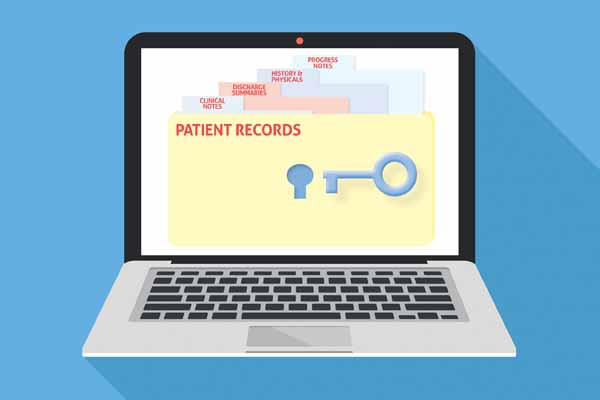
Electronic health record (EHR) vendors must conduct a major software upgrade by Dec. 31, and physician offices should be prepared.
Vendors are responding to changes called for by the 21st Century Cures Act, a bipartisan U.S. law that aims to promote innovation in health care technology in ways that deliver information more conveniently and transparently for both patients and physicians.
The upgrade is designed to improve EHRs’ ability to communicate securely with other medical practices, improve e-prescribing security, and allow patients to access medical information through the application of their choice – among other improvements, according to the Office of the National Coordinator for Health Information Technology.
EHR vendors vary in how they handle the updates, says Plano gynecologist Marlene Diaz, MD, a member of the Texas Medical Association’s Committee on Health Information Technology (HIT). Some schedule the upgrade with physician offices while others simply announce the date of an upcoming update.
“Every vendor is different in how they manage their updates,” she said.
Medical practices typically need some warning to brace for inevitable post-upgrade glitches – software problems that don’t halt patient care but do make visits more difficult for patients and staff, she says.
For instance, a recent EHR software upgrade at Dr. Diaz’s independent practice shut down the EHR’s ability to automatically check a patient’s insurance coverage for about two weeks.
“Normally, there’s a seamless system that runs insurance eligibility for the day’s scheduled patients before we walk in in the morning,” she said. “It’s automatic. But suddenly it wasn’t getting done.”
Physician offices should try to schedule an upgrade – if the vendor allows that – for a time when staff can identify and eliminate those problems without involving patients, Dr. Diaz says.
EHR vendors also usually publish what are called release notes, she says. Though these notes primarily detail technical improvements, they sometimes reveal helpful upgrades that must be activated by a practice administrator.
Some physicians may be wary of this year’s changes, but “these upgrades are typically good because they help with regulatory compliance and include improvements that physicians should find helpful,” said Shannon Vogel, TMA’s associate vice president for HIT. However, any practice hunting for glitches should first look at customized software to make sure it’s still functioning properly.
Some vendors don’t charge for upgrades while others do, she says. Upgrades can cost between several hundred and several thousand dollars.
Physicians who pay for upgrades may opt to delay them to save money, Ms. Vogel says. But the upgrade will have to take place eventually.
“You can delay an upgrade,” she said. “But if you ignore it too long, you may find yourself out of regulatory compliance.”